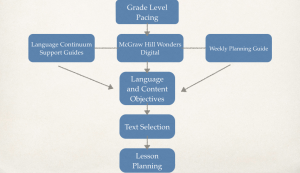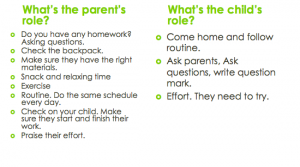ELL teachers have a multitude of resources to help support language acquisition in their instruction. The important thing to remember, with any resource, is that it is a vehicle for teaching language. Digital resources can play an important role in supporting 21st century learning skills and also creating interactive opportunities for students to speak, listen, read and write in English. We recently had a professional development session that highlighted useful strategies for teachers to use when planning with Wonders digital resources while keeping language acquisition at the forefront. Some of the keywords that we highlighted are illustrated in this wordle:

Retrieved from: Wordle http://www.wordle.net/
Planning for ELL students and utilizing a multitude of materials is a little like telling a story. Teachers need to begin by understanding where their students are at in their learning both with receptive and productive language processes. They also need to know what is happening in the general education classroom and then make educated decisions about where their students are and where they want them to go in learning. The benefit of using the digital resources from Wonders is that if problem and solution is being taught in the third grade classroom, this skill can still be taught in ELL but adjustment in text complexity and instructional approaches may be modified to help provide access to students at Emerging language proficiency. As a result, using digital resources, you may be able to teach problem and solution but instead of using the 3rd grade text, teachers may find that a second grade text is more appropriate. They will have access to all of this through the digital site. Here is a road map for planning that we discussed. It highlights one example of how teachers need to utilize planning materials and digital resources to create access to learning for students.

To see the complete powerpoint that explains this process more in depth, click here.
To download a copy of a lesson plan checklist for using Wonders digital resources, click here.
For directions on how to download leveled readers from Wonders, click here.
To access the weekly planning guides for K-2 and 3-5 as well as the language continuum support guides, click here to get to our McGraw-Hill Reading Site.
We hope these are helpful resources to support teachers. It is always important to remember that materials are a support. The impact of the materials depend on the scaffolding, differentiation and intentionality of language instruction that is provided by the teacher. Happy planning everyone!



